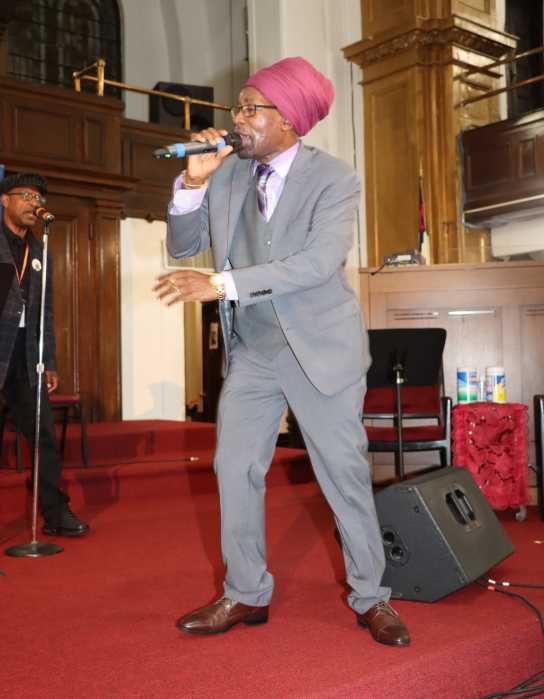Recently Noted:
BALLETS RUSSES This documentary usefully renovates a neglected eminence, chronicling the company’s history 1909 as the inspiration of Sergei Diaghilev, the polymath Russian expatriate, who drew Matisse, Picasso, and Stravinsky into orbit around the nucleus of choreographers Mikhail Fokine, Léonide Massine, and dancer Vaslav Nijinksy. The highly wrought script manages the feat of compressing an 80-year history into exactly two vacuum-packed hours. Yet, it would have been more valuable still had it accurately conveyed the company’s uniquely progressive queer reality. IFC Center. (Ioannis Mookas)
BROKEBACK MOUNTAIN Arriving on an avalanche of hype, “Brokeback Mountain” finally reaches the screen nine years after E. Annie Proulx’s memorable short story first appeared in The New Yorker. The story’s enduring impression—once the novelty wore off, one of sentimentality and archaism—is preserved intact in Diana Ossana and Larry McMurtry’s reverent yet inventive adaptation. (Ioannis Mookas)
BUBBLE Even before it turns into a murder mystery, “Bubble” feels sinister and off-kilter. For its first half hour, it seems to be a gentle, observant account of working-class Midwestern life. For most directors, the plot, setting, and nonprofessional cast would call for a pseudo-documentary style, but the film aims for a much different look. Shooting on high definition digital video, director Steven Soderbergh creates a hyper-real feel. Landmark Sunshine. (Steve Erickson)
CACHE (Hidden) Michael Haneke’s never come across a genre he didn’t want to implode—family melodrama in “The Seventh Continent” and “The Piano Teacher,” horror in “Funny Games,” science fiction in “Time of the Wolf.” With “Caché,” he’s made a thriller that retains all the form’s tension while offering little of its satisfactions and catharsis. In French with English subtitles. Lincoln Plaza, Landmark Sunshine, Brooklyn Heights, Kew Gardens. (Steve Erickson)
CAPOTE Yes, in “Capote,” Philip Seymour Hoffman gives a terrific—call it Oscar-worthy —performance channeling gay writer Truman Capote. He has the author’s mannerisms down pat, his voice expertly attuned to delivering witty bon mots. It’s a perfect role for the actor/chameleon and he plays it to the hilt. (Gary M. Kramer).
THE FAMILY STONE Tom Bezucha’s “Family Stone” tells the story of Meredith (Sarah Jessica Parker), an uptight, finance-whiz girlfriend of the eldest Stone son, who brings her to his New England home for the holidays. Problem is, the eccentric family loathes the interloper. The dream ensemble includes Diane Keaton, Dermot Mulroney, Luke Wilson, and Claire Danes. CC Village East. (David Kennerley)
A GOOD WOMAN When classic plays are made into movies, some trepidation naturally comes with the release—will the adaptation be faithful, will the cast stand up to the best performances, and how far will the director take artistic license? Fans of Oscar Wilde’s play “Lady Windermere’s Fan” rest assured. “A Good Woman” features two beautiful leading ladies, Helen Hunt and Scarlett Johansson, a talented supporting cast, a strong script, and stunning locales. And fashionistas will go crazy over the wardrobes. AMC Empire 25, Regal Union Square, Clearview’s 1st and 62nd. (Winnie McCroy)
GOOD NIGHT, AND GOOD LUCK “Good Night, and Good Luck” painstakingly recreates a brief, shining moment in television history when the indefatigable Edward R. Murrow brought down Senator Joseph McCarthy. A testament to George Clooney’s skillful tenacity. (David Kennerley)
MATCH POINT Character is this new Woody Allen’s film’s strength—both Nola and Chris are memorable creations. However, the screenplay is both the film’s high point and greatest weakness. Chris’ mysterious job, while apparently demanding and extremely well paying, leaves him plenty of time for afternoon flings and vacations. His rise in the business world is too fast and easy to be completely believable. “Match Point” isn’t concerned so much with the details of Chris’ sinecure as its effect on him. While he may have come from a lower class, outsider background, he becomes determined to hang onto his newfound wealth at all cost. (Steve Erickson)
THE NEW WORLD “The New World” engages with, and operates in, the realm of fable and archetype. Many historically contested or disproved matters—most crucially the spurious romance between Pocahontas and John Smith—are fused into a spellbinding fiction garlanded with Malick’s signature poetic voice-over narration. As ever, he follows his own program, reshaping canonical myths rather than demystifying them with naked fact. (Ioannis Mookas)
Paradise Now Suicide turns a person’s life into a giant question mark. For suicide bombers, it’s doubly true. Everything in their life is seen as a prelude, making the suicide bomber a difficult character to fictionalize. Palestinian-born, Dutch-based director Hany Abu-Assad is certainly aware of the pitfalls, perhaps too much so. Landmark Sunshine. (Steve Erickson)
TO MURDER THE CINEMA: The Films of Marguerite Duras Duras, the doyenne of postwar French letters was many things ––innovator of the nouveau roman, abettor of the French feminist movement, political interventionist, and later, scandalously sexed, dissolute older woman. A decade after her death in March 1996, Duras’ extraordinary career in film remains among the least appreciated aspects of her legacy. The Duras series now running at the French Institute/ Alliance Française, the first substantial New York survey of her films since the 1995 MoMA retrospective, provides opportunities to catch “Le Camion,” her minimalist spoken-word slam with Gérard Depardieu; and the well-loved “India Song,” with Delphine Seyrig. “Nathalie Granger” (1972) exerts a special fascination, however, and if you can see only one of these programs, try not to miss it. Florence Gould Hall. Through Feb. 28. (Ioannis Mookas)
THE TENANTS Based on a 1971 novel by Bernard Malamud, this is the story of two writers fighting in an abandoned building. Harry Lesser (Dylan McDermott, known from The Practice), a Jewish writer and sole remaining tenant, and Willie Spearmint (Snoop Dog), a black writer who is squatting in one of the building’s many deserted, filthy flats, are from two different worlds. Set in the racially charged world of New York City in the early 1970s, director Danny Green underscores the racial tensions with bleak interiors and haunting sound. AMC Empire 25. (Seth J. Bookey)
TRANSAMERICA “Transamerica,” the new film written and directed by Duncan Tucker, is terribly written, poorly conceived, and its premise is stupid to the point of ridiculousness. It is also, most likely, the best film of 2005. The credit for this success lies not in Tucker’s overbearing hands, but in the more delicate fingers of Felicity Huffman. IFC Center, AMC Empire 25, Clearview’s 62nd & Broadway, Clearview Chelsea, Pavillion Cinema. (Nick Feitel)
WHO GETS TO CALL IT ART? Filmmaker Peter Rosen’s fascinating 80-minute documentary about Henry Geldzahler and the entire American—i.e., New York—art movement of the explosive 1960s is like a bracing and wonderful class reunion. John Chamberlain, James Rosenquist, Larry Poons, Mark di Suvero, Francesco Clemente, Ellsworth Kelly give their recollections and their praise of Henry Geldzahler who became the first curator of contemporary art at the Metropolitan Museum of Art and also, in 1977, the city’s first Commissioner of Cultural Affairs. Film Forum. (Jerry Tallmer)
WHY WE FIGHT Opening a year after its coronation at Sundance 2005, Eugene Jarecki’s magnificent documentary “Why We Fight” is poised to incite the national dialogue about our corrupt administration and its profit-driven endless war into a furor. Assembled with a jeweler’s precision and finesse, the film’s tightly reasoned, diamond-edged argument is designed to pierce the mystifications of Bush and his corporate media handmaidens. Angelika, Lincoln Plaza. (Ioannis Mookas)
gaycitynews.com































